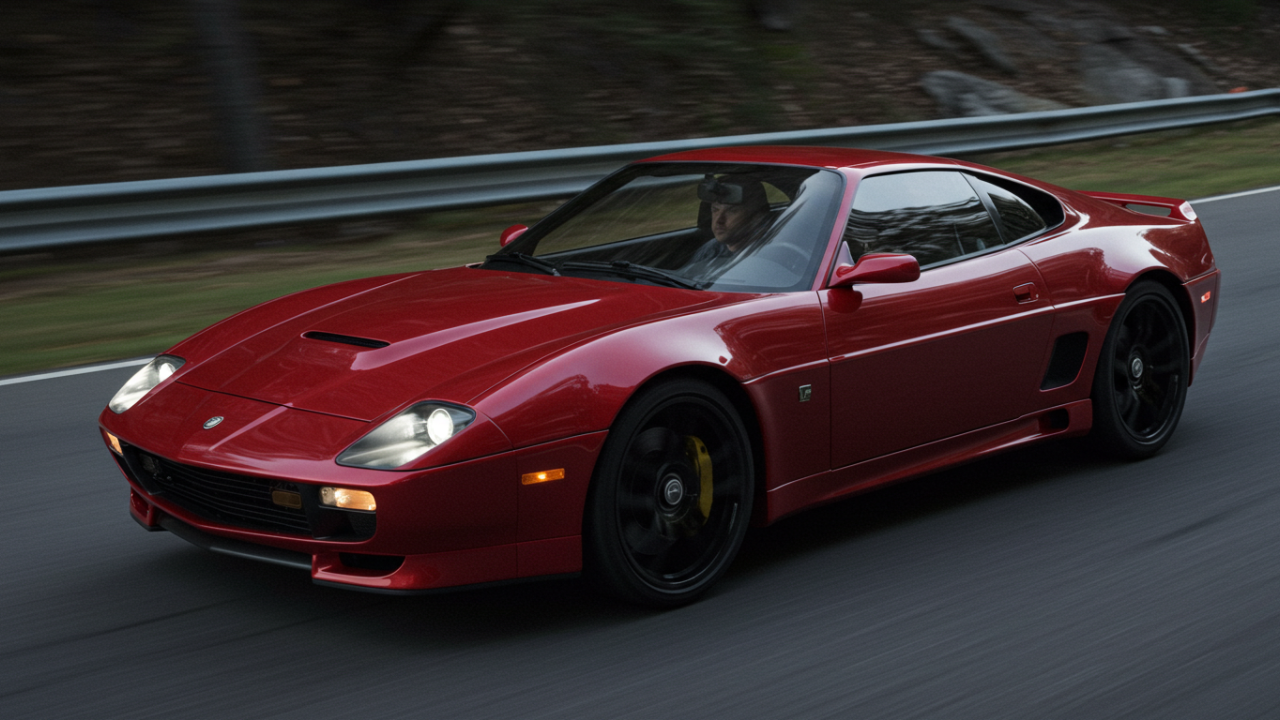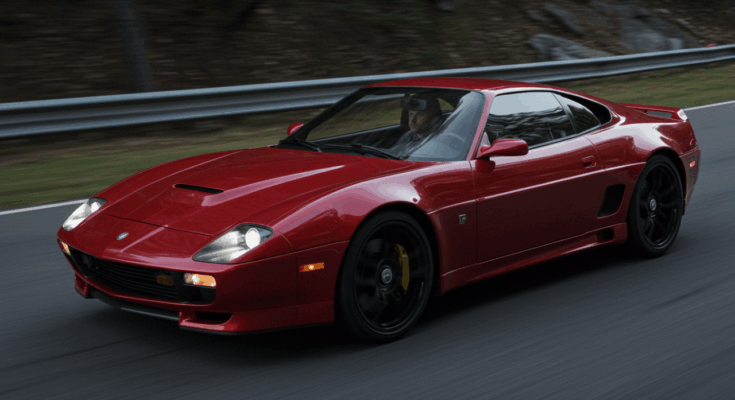There’s something primal about the roar of a high-revving engine, the way a sports car clings to a twisty road like it’s glued there, and the adrenaline rush when you mash the throttle on an open straight. In 2025, the world of sports cars isn’t just surviving—it’s thriving. With advancements in turbocharging, lightweight materials, and even hybrid assists in some models, manufacturers are pushing boundaries to deliver more power, sharper handling, and smarter tech without sacrificing the soul of what makes these machines so addictive. Whether you’re a weekend warrior chasing apexes or someone upgrading from a daily driver to something with real bite, this year’s lineup offers options for every thrill-seeker.
In this deep dive, we’ll explore five standout 2025 sports cars that embody the pinnacle of performance driving. From budget-friendly roadsters that prioritize fun over fury to supercar-level beasts that redefine speed, we’ll break down their specs, real-world driving dynamics, and who they’re best suited for. Expect actionable insights on everything from track-day prep to daily usability, so you can make an informed decision if one of these catches your eye. Let’s rev up and hit the road.
Why 2025 Stands Out in Sports Car Evolution
The 2025 model year marks a sweet spot for sports cars. Electrification is creeping in subtly—think mild hybrids boosting low-end torque—while traditional internal combustion engines get cleaner and more efficient. Carbon fiber chassis components are becoming standard in mid-tier models, shaving pounds and improving agility. And with global supply chains stabilizing post-pandemic, prices are holding steady, making high-performance accessible.
Common questions from buyers? “Can I use this as a daily driver?” or “How much will maintenance sting?” We’ll tackle those head-on. Expect improved infotainment with wireless Apple CarPlay and Android Auto across the board, plus advanced driver aids that don’t intrude on the fun. Safety ratings are stellar too, with many earning top marks from NHTSA and IIHS. But the real magic? These cars remind us why we drive: pure, unfiltered joy.

Entry-Level Excitement: The Mazda MX-5 Miata and Toyota GR86
If you’re dipping your toes into sports car ownership without breaking the bank, the sub-$35,000 segment is where the pure driving experience shines brightest. These two roadsters— the Mazda MX-5 Miata and Toyota GR86—focus on lightweight construction, rear-wheel drive, and manual transmissions to deliver grins per mile that belittle their modest power figures.
Mazda MX-5 Miata: The Eternal Roadster
Starting at $30,765, the 2025 Mazda MX-5 Miata remains the gold standard for affordable exhilaration. Powered by a zippy 2.0-liter inline-four engine pumping out 181 horsepower and 151 lb-ft of torque, it’s not about outright speed—0-60 mph arrives in about 5.5 seconds, with a top speed hovering around 130 mph. What it nails is balance: at just over 2,300 pounds, the Miata dances through corners with telepathic steering and minimal body roll, thanks to its double-wishbone suspension and near-perfect 50/50 weight distribution.
Key features include a retractable soft top for open-air bliss, Brembo brakes on higher trims, and a six-speed manual that’s buttery smooth. The interior is cozy—think supportive Recaro seats and a simple analog gauge cluster—but cargo space is tight at 4.6 cubic feet with the top up. Pros: Unmatched fun-to-dollar ratio; razor-sharp handling that encourages backroad exploration. Cons: Tiny trunk limits practicality; wind noise at highway speeds can fatigue long hauls.
For buyers: Ideal for solo drivers or couples who crave a convertible for date nights or autocross days. Actionable tip: Opt for the Club trim with Bilstein dampers for $3,000 more—it’s worth it for track sessions. Maintenance? Mazda’s reliability shines; expect oil changes every 7,500 miles and tires lasting 20,000 if you rotate religiously. Budget $500 annually for upkeep, far less than pricier rivals.
Toyota GR86: Affordable Rear-Drive Rocket
Priced from $31,595, the 2025 Toyota GR86 builds on its Subaru BRZ sibling with a 2.4-liter flat-four engine delivering 228 horsepower and 184 lb-ft of torque. It sprints to 60 mph in roughly 6.1 seconds and tops out near 140 mph, but like the Miata, it’s the chassis that steals the show. Toyota’s chassis tuning emphasizes playful oversteer, controlled by an electronic limited-slip differential and adaptive suspension on Premium trims.
Standout features: A six-speed manual or automatic, 18-inch alloy wheels wrapped in Michelin Pilot Sport 4 tires, and Toyota Safety Sense 3.0 with proactive driving assist. The cabin seats four (barely), with 6.3 cubic feet of trunk space—better for groceries than the Miata. Pros: Bulletproof reliability; customizable via aftermarket parts without voiding warranty. Cons: Engine can feel buzzy above 4,000 rpm; rear seats are vestigial at best.
Who it’s for: Young enthusiasts or empty-nesters wanting a coupe for spirited commutes. Pro tip: Pair it with winter tires for year-round usability; the GR86’s low center of gravity shines in snow with proper rubber. Annual costs? Around $600, including Toyotas’ legendary low depreciation—retain 70% value after three years.
Mid-Tier Mayhem: The BMW M2
Stepping up to $65,500, the 2025 BMW M2 is a compact coupe that punches like a heavyweight. Its 3.0-liter twin-turbo inline-six now boasts 473 horsepower (a 20-hp bump) and 403 lb-ft of torque with the manual, rocketing to 60 mph in 3.9 seconds and exceeding 155 mph electronically limited. Weighing 3,814 pounds, it’s no featherweight, but adaptive M suspension and active M differential keep it planted.
Highlights: Optional six-speed manual or eight-speed auto, carbon-ceramic brakes for $8,000 extra, and iDrive 8.5 infotainment with a curved display. The interior wraps you in leather and Alcantara, with 13.8 cubic feet of cargo. Pros: Ferocious acceleration; track-ready out of the box. Cons: Stiff ride punishes potholes; fuel economy dips to 16 mpg city.
Target audience: Performance junkies who want a daily with supercar snap. Insight: For track days, upgrade to Michelin Cup 2 tires—they grip like glue but sip tread fast (15,000 miles max). Maintenance runs $1,000 yearly; BMW’s app tracks service reminders seamlessly.
American Icon Reborn: The Chevrolet Corvette Stingray
At $68,300, the 2025 Chevrolet Corvette Stingray isn’t just a sports car—it’s a mid-engine marvel democratizing supercar thrills. The 6.2-liter V8 churns 495 horsepower and 470 lb-ft, hitting 60 mph in 2.8 seconds with the eight-speed dual-clutch and Z51 package, topping 194 mph. Magnetic Ride Control and wide Goodyear Eagle F1 tires ensure it corners like it’s on rails.
Features galore: Removable roof panel, 12-inch digital cluster, and Google Built-In for seamless navigation. Trunk space totals 12.6 cubic feet—impressive for two-seaters. Pros: Bargain supercar value; customizable via Chevy’s 1LT-3LT trims. Cons: Cabin heat builds in traffic; dealer markups can inflate prices.
For whom? Aspiring track stars or retirees seeking grand touring flair. Actionable advice: The Z51 track package ($6,000) adds a rear spoiler and performance exhaust—essential for Nürburgring dreams. Expect $800 in annual maintenance; GM’s warranty covers powertrain for five years/60,000 miles.
The Pinnacle of Precision: Porsche 911 Carrera
Commanding $122,095, the 2025 Porsche 911 Carrera is the benchmark against which all sports cars are measured. The updated 3.0-liter twin-turbo flat-six makes 388 horsepower and 331 lb-ft in base form, dashing to 60 mph in 3.5 seconds via the eight-speed PDK, with a top speed of 183 mph. For S models, bump to 480 hp for sub-three-second sprints.
Porsche’s PASM suspension and rear-axle steering deliver otherworldly poise. Inside: A 10.9-inch touchscreen, ambient lighting, and 4.6 cubic feet frunk plus rear seats (optional). Pros: Timeless design; resale holds 80% after five years. Cons: Options list balloons costs; firm ride for urban jaunts.
Suited for: Connoisseurs who value engineering over flash. Tip: Spec the Sport Chrono package for launch control—transforms highway merges into events. Yearly upkeep? $1,200; Porsche’s certified pre-owned program eases resale worries.
Head-to-Head: How They Stack Up
To help you compare, here’s a quick specs table:
| Model | Starting Price | Horsepower | 0-60 mph | Fuel Economy (City/Hwy) | Curb Weight |
|---|---|---|---|---|---|
| Mazda MX-5 Miata | $30,765 | 181 | 5.5 sec | 26/34 mpg | 2,315 lbs |
| Toyota GR86 | $31,595 | 228 | 6.1 sec | 21/31 mpg | 2,833 lbs |
| BMW M2 | $65,500 | 473 | 3.9 sec | 16/24 mpg | 3,814 lbs |
| Chevrolet Corvette | $68,300 | 495 | 2.8 sec | 16/25 mpg | 3,642 lbs |
| Porsche 911 Carrera | $122,095 | 388 | 3.5 sec | 18/25 mpg | 3,461 lbs |
The Miata and GR86 win on affordability and efficiency, ideal for novices. The M2 and Corvette offer brute force for under $70K, while the 911 excels in refinement. Common dilemma: Manual vs. auto? Manuals build connection but autos shave seconds—test drive both.
Smart Buying and Ownership Advice
Ready to pull the trigger? Start with a pre-purchase inspection ($200-300) to catch hidden issues. Finance rates hover at 4-6% for good credit; lease if you’ll upgrade in three years. Insurance? Sports cars add $500-1,000 annually—shop via apps like Progressive for bundles.
For longevity: Rotate tires every 5,000 miles, use premium fuel, and store in a garage. Track days? Invest in a data logger like AIM Solo ($500) to analyze laps. Resale tip: Stick to popular colors like black or silver—they fetch 10% more.
In 2025, these sports cars prove you don’t need a millionaire’s budget for millionaire’s thrills. Whichever you choose, it’ll transform mundane drives into adventures.
FAQ
What’s the best sports car for beginners in 2025?
The Mazda MX-5 Miata. Its forgiving handling and low cost make it perfect for learning curves without overwhelming power.
How do I prepare a sports car for track days?
Upgrade brakes and tires first, then get an alignment. Warm up gradually and monitor temps with onboard gauges.
Are 2025 sports cars fuel-efficient enough for daily use?
Most hit 20+ mpg combined, but expect dips in spirited driving. Hybrids like future Porsches will improve this.
What’s the biggest maintenance surprise for owners?
Tire wear—high-performance rubber costs $800-1,200 per set. Budget accordingly and drive conservatively on streets.
Can I mod these cars without voiding warranties?
Yes, for bolt-ons like intakes, but document everything. Brands like BMW and Chevy offer performance parts that stay covered.



